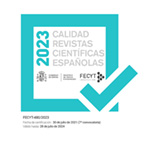Russia after the Euromaidan Foreign Policy Limitations amid Clashing Geostrategies of Territorial Expansion and Eurasian Integration
Resumen
Tras el Euromaidán, Rusia respondió con una intervención militar en territorio ucraniano. Esta revisión del status dio un giro más brutal en febrero de 2022. Las razones del revisionismo de Rusia encajan en el debate sobre el creciente distanciamiento entre la Federación Rusa y Occidente, junto con una renovación de la caracterización clásica de Rusia como un Estado “imperialista” empeñado en restaurar el poder de la ex Unión Soviética centrado en Moscú. Aunque la caracterización amplia de Rusia como “imperialista” capta hábilmente su brutal negación de la soberanía de Ucrania, todavía combina diferentes vectores geográficos y períodos históricos. Este artículo contribuye a los debates en curso empleando los conceptos de “perspectivas geoestratégicas” de William Walters (es decir, marcha, frontera colonial y limes) y los modelos geopolíticos westfalianos e imperiales de Christopher S. Browning y Pertti Joenniemi. Este marco resume, por un lado, la compleja compatibilidad de los procesos de revisionismo territorial y, por el otro, la integración regional de la ex Unión Soviética centrada en Rusia. En última instancia, el objetivo es analizar la política fronteriza de Rusia posterior al Euromaidán, abordando tanto la revisión de las fronteras de Ucrania como la integración regional a través de la Unión Económica Euroasiática durante el statu quo que duró hasta 2022. El panorama resultante muestra que el modelo geopolítico westfaliano de la Federación Rusa de expansión del limes contradice el modelo geopolítico imperial basado en la creación de fronteras coloniales. El refuerzo incremental del modelo westfaliano desde febrero de 2022 plantea la interesante pregunta de cómo afectará esto a la geopolítica imperial con respecto a otros países de la ex Unión Soviética.
Descargas
Descarga artículo
Licencia
La revista Geopolítica(s). Revista de estudios sobre espacio y poder, para fomentar el intercambio global del conocimiento, facilita el acceso sin restricciones a sus contenidos desde el momento de su publicación en la presente edición electrónica, y por eso es una revista de acceso abierto. Los originales publicados en esta revista son propiedad de la Universidad Complutense de Madrid y es obligatorio citar su procedencia en cualquier reproducción total o parcial. Todos los contenidos se distribuyen bajo una licencia de uso y distribución Creative Commons Reconocimiento 4.0 (CC BY 4.0). Esta circunstancia ha de hacerse constar expresamente de esta forma cuando sea necesario. Puede consultar la versión informativa y el texto legal de la licencia.









